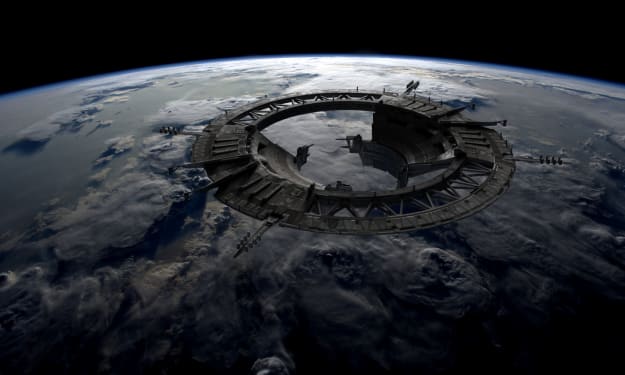Earth's second ultra-small natural satellite discovered
Only 1.2 meters in diameter

The last time we found an ultra-small natural satellite of the Earth was in 2006, and this time we found a small satellite, code-named 2020 CD 3, which is quite smaller than a refrigerator.
PART 01
For a short period, the Earth has had at least two natural satellites. (And, of course, thousands of artificial satellites.
The first one is naturally the Moon, which is the only long-term stable natural satellite of the Earth. The prevailing view is that the Moon was born in a violent collision between the Mars-sized "Thea" and the primordial Earth and that the debris from the collision formed this relatively large satellite. For a long time, the moon has been with the Earth in the universe and may have even brought some protection to the Earth.
In February of this year, however, astronomers discovered another nano-sized object orbiting the Earth, which has been named 2020 CD 3.
Initial observations showed that 2020 CD 3 was so small that we couldn't see it with our naked eyes. It does not illuminate the night sky as the moon does, nor does it cause any tidal changes. At that time, scientists could not yet confirm whether it was a very small satellite or some artificial object like space junk.
Over the next few months, astronomers used a series of telescopes around the world to make more detailed observations of the object. Recently, a team of 23 scientists from 14 academic institutions announced the results of their study of 2020 CD 3. They confirmed that it is a nanosatellite (mini moon), and it is the second nanosatellite of Earth to be discovered so far. The paper, published in the Astronomical Journal, discusses its discovery and detailed characteristics.

PART 02
One of the main difficulties in studying nano satellites is that it requires exhaustive observations and studies to rule out the possibility that they are man-made objects. The new findings conclusively show that the 2020 CD 3 is indeed a natural object, roughly the size of a small dishwasher and a refrigerator.
The new study found that the 2020 CD 3 is about 1.2 meters in diameter. Based on its color and brightness, it is probably made of silicate rock, like many other rocks in the asteroid belt. It has been speculated that it is likely to be a fragment of a larger asteroid orbiting the Sun between the orbits of Mars and Jupiter.
Its appearance around Earth most likely originated from an "encounter" with the Earth-Moon system. In this encounter, gravity pulled the space rock out of its orbit around the Sun and threw it into orbit around Earth. Calculations show that the nano-satellite has been orbiting the Earth for at least two and a half years. According to simulations, the average capture time for nanosatellites is only about nine months, and 2020 CD 3 was captured much longer than expected. This may be due to its very close proximity to the Moon, which puts it into a relatively more stable orbit.
Although 2020 CD 3 has been bright enough to be detected at least six times in the past few years, to spot such a very small object, it needs to be not only bright enough but also slow enough to move - and there are only one or two such opportunities left. It wasn't until February 2020, when it was very close to Earth, that scientists discovered it. However, shortly after its discovery, in March of the same year, it had already broken away from Earth and was back in orbit around the Sun again.
Although 2020 CD 3 has temporarily "abandoned" the Earth, the possibility that it will return to Earth at some point in the future and dance with the Earth cannot be ruled out. Scientists still need to make extensive follow-up observations to accurately determine its orbit.
PART 03
Several years ago, studies already predicted that there must be a group of ultra-small satellites that will orbit the Earth for a short period.
Fourteen years ago, scientists identified the first short-term nano satellite of the Earth, 2006 RH120, which "hovered" around the Earth for less than a year from the summer of 2006 to the summer of 2007. It took many years before a second nanosatellite came into view. Many scientists believe that when the giant telescope Vera C. Rubin Observatory is built, we will find more of these miniature "companions".
In a sense, these nano satellites have brought the asteroid belt to our attention, giving us a unique opportunity to study it up close. In the future, nanosatellites may become interesting targets for scientific research and asteroid mining technology practice, providing key clues about the formation of our solar system.
About the Creator
Many A-Sun
Where your interests lie, that's where your abilities lie.






Comments
There are no comments for this story
Be the first to respond and start the conversation.